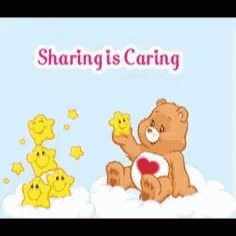Sharing Knowledge and Joy
I would like to start my blog with an adaptation of Pharrell Williams’ song ‘Happy’ for Istanbul, the city where I was born. You can find different versions of this song from Germany, the Netherlands, Japan, or somewhere else. It is your choice 🙂
In our class last week and this week, when I saw people’s expectations and predictions regarding technological devices and applications (such as the telegraph, TV, phone, or Google), I realized that people tend to be rather pessimistic about technological developments. They often view these advancements as if they were leading us into a dystopia as if this is the definitive end.
Social media, on the other hand, is a space where everyone can make their voices heard. Teenagers, in particular, seek to have their voices heard as a way to validate their existence. To me, social media feels like a space where a sense of community belonging is fostered, granting individuals both a voice and a sense of empowerment, as Michael Wesch described in An Anthropological Introduction to YouTube.
All I can notice is that global connections have given rise to global citizenship. Even if we cannot speak the same language, like English or Chinese, we can communicate in various forms of the same language through social media. People can express themselves and represent their worlds.
According to the report from the Pew Research Center, the trends in social media are changing because social media platforms are continuously evolving, offering us an ever-expanding array of options to engage with communities where our voices can be heard. There are both pros and cons to this. While everyone has the opportunity to be heard by some, there’s also the risk of cyberbullying, much like in a physical community, which can be unsettling. However, people can enjoy their spare time and have fun with those they don’t know. They can also share their solidarity through a video, be it a political speech, a Moldovan pop song from 2003, or Pharrell Williams’ “Happy.” People can share their joys, and as everyone joins the new Numa Numa Craze, they share their happiness as well. After all, happiness is contagious, and that’s something we should wholeheartedly celebrate!
Do you remember this video:
How about this one:
Even though I haven’t personally used TikTok or Snapchat apps, I believe they also provide a sense of belonging in terms of communication and sharing. Last year, a classmate showed me how he used TikTok to share his knowledge. When creating video content, he thoroughly researched the topic, thus expanding his own knowledge. In this way, he shared what he had learned, essentially spreading his knowledge. The most important thing is he is glad to share. Happy!
Social media and technology foster creativity through sharing. People are active now. Students cannot be passive recipients of information but active participants in their learning journey. The future classroom should be one where technology is seamlessly integrated, and students are equipped with digital skills through their smartphones, tablets, and tools like TikTok or YouTube. It’s a space that encourages critical thinking, creativity, and collaboration while fostering a deep understanding of responsible digital citizenship. The classroom of the future should benefit from technology to provide personalized learning experiences and be more responsive to students’ individual needs and interests. It should be a place where students can connect with peers and knowledge from around the world, expand their horizons, and foster empathy.
Everything is evolving, and education is no exception. Educators cannot stop time or avoid this evolution. However, educators must adapt to the digital age by incorporating digital literacy, media literacy, and online safety into their curricula. Professional development for teachers is a priority to ensure they can effectively navigate this new landscape and engage students in meaningful ways. Of course, all of us have concerns about excessive screen time, cybersecurity, and the responsible use of technology. Schools should educate both students and parents about responsible technology use while also setting boundaries to ensure a healthy balance between online and offline activities. Technology and media should be mandatory for teacher candidates at universities as well.
I don’t want to merely watch the progress of technology, even if I’m behind the new generation. I believe we can all actively participate in the classroom.

2 thoughts on “Sharing Knowledge and Joy”
Very thoughtful and interesting post Esin. I like how you really try when it comes to the assignments and stuff it inspires me to try harder. Thank you
Hello!
Thanks for sharing your thoughts! I would agree with a lot of what you said about technology being a way for people (especially young people) to express themselves and to “validate their existence” – a phrase I thought was really well said.
However, I want to challenge your view a little by adding to it. Can the fact that people (especially young people) turn almost expressly to social media to express themselves and to be and feel validated be an entirely good thing? I think not. I’d argue that young people are replacing their face-to-face relationships with social media relationships (with people they may not even know in real life). To see more of my thoughts on this, visit my blog post from this week.
Bernice